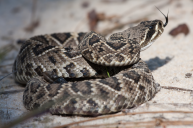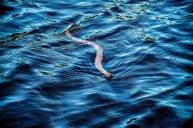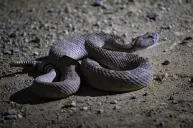We've all heard it. "Red on yellow, kill a fellow. Red on black, a friend of Jack." It's a saying used to remember the characteristics of the eastern coral snake, the highly venomous serpent found in various places around the U.S. The phrase has been proven only true in North America, as some of the coral snake species (there are more than 75 recognized coral snakes) in other parts of the world don't follow the rule. It was made up because a similar-looking cousin of the eastern coral snake takes up residence in part of the southwest, from the Sonoran Desert of Arizona and northern Mexico to the southwest corner of New Mexico, so there's still good reason to set the saying to memory. But there is certainly more to know about the eastern coral snake.
In an effort to expand our knowledge base on these snakes, we'll help you understand this venomous (but rarely deadly) snake for what it is, not for what it might do to someone. This fixed-fang, highly secretive snake might be dangerous, but it is a beautiful thing to behold and a part of our wildlife ecosystems.
Of course, not everyone likes snakes, but the coral snake is a rarity that could use a little light shined on it. Although coral snakes are not considered aggressive, this species possesses some of the most toxic venom of any North American snake, and are potentially hazardous to humans and pets. As a member of the Elapidae family, the same as cobras, sea snakes, and black mambas, the coral snake holds strong company, but deserves some closer inspection and some honest appreciation. Here's what you need to know about the eastern coral snake.
Coral Snake Range
Mostly, the eastern coral snake lives from the coastal Carolinas through Georgia and across the southeast from Mississippi to Alabama, Louisiana, and parts of Texas. It is said to live in all of Florida. This snake stays on or near the coastal plains, ranging from dry, well-drained flatwood areas and scrubland and wet hummocks, including the borders of swampy regions. These slender snakes will often frequent tortoise burrows since they prefer loose soil near brushy areas, especially in the coastal plains.
Eastern Coral Snake Lifecycle
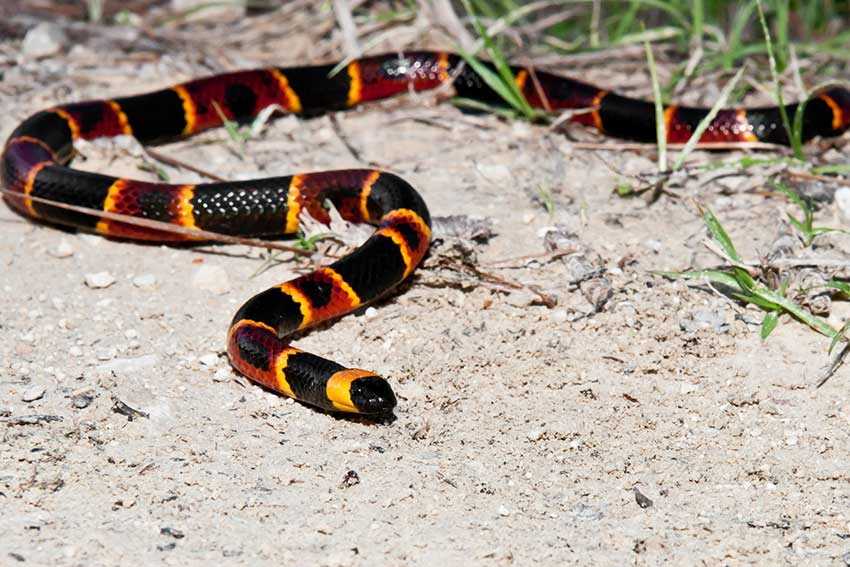
JasonOndreicka/Getty
An exciting feature of the coral snake is that their rings (which distinguish them from similar snakes) go completely around their bodies. Some lookalike snakes such as the scarlet kingsnake have red heads and white bellies; the coral snake's nose is black.
The pupils of the coral snake are round, and the tail is black and yellow, without any red rings. When they feel threatened, they often curl the tip of their tail in an apparent defensive stance. Since they frequent leaf litter, ground debris, and even hollowed-out logs, they aren't seen often, preferring to stay out of sight. They lay four to seven eggs, and the young emerge about five inches long and are thoroughly venomous at that time. Adults average 20 to 30 inches in length but can grow longer. Mating generally occurs in the spring but is known to happen as late as the fall.
The Coral Snake's Venom
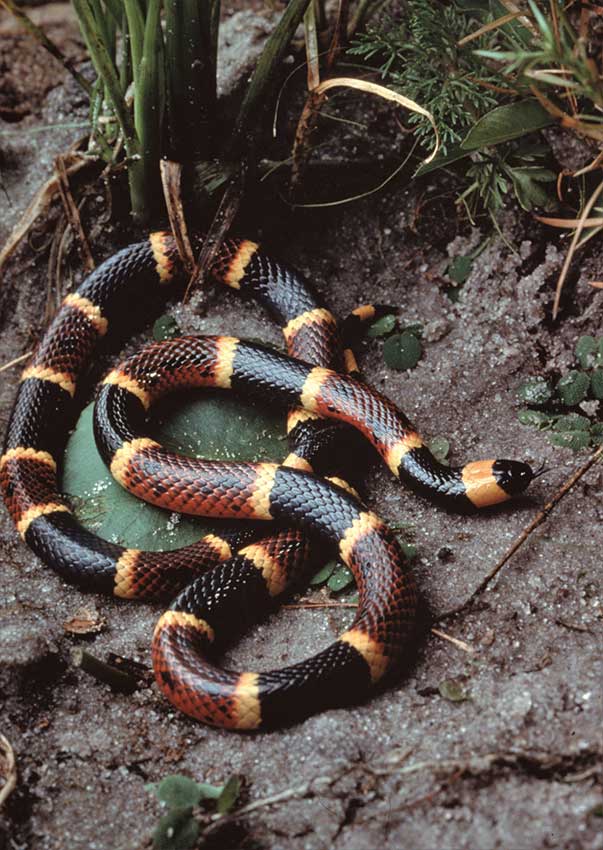
Weber/Getty
It is well documented that coral snakes have a particular venom that is a close second in potency and danger only to the eastern diamondback rattlesnake. But it's said that the coral snake - in most defensive bites - only injects a small amount of its venom.
Since it is so reclusive in its behavior, hunters, hikers, and other outdoors-loving people rarely see it in the wild, making dangerous encounters less likely. The fact is that the coral snake hunts lizards, frogs, and other snakes by burrowing under the leaf litter, grabbing their intended target, and basically "chewing" on it in such a way as to inflict its venom and then feed. This is because their envenomation mechanism is less effective than pit vipers with much more prominent, hollow fangs. They should never be handled and given a lot of room to go about their business if they should ever be encountered.
One common misconception about coral snakes is that their fangs are in the rear of their mouth and must somehow "chew" on a victim to inject the venom. While the coral snake has a fixed pair of fangs (non-retractable), it can immediately inflict its poison.
A bite from a coral snake may not seem all that bad at first since there is sometimes little pain or swelling at the site, but these and other symptoms can take up to 12 hours to appear, and by that time, it may be too late. If you think a coral snake has bitten you, immediately call 911 since there is well-known antivenom available to treat a possible envenomation. Look for complications such as slurred speech and double vision, and a bite can also cause muscular paralysis, ending in respiratory or cardiac failure.
Eastern coral snakes are interesting critters, but are best observed from a safe distance and appreciated for their uniqueness and rarity.
Please check out my book "The Hunter's Way" from HarperCollins. Be sure to follow my webpage or on Facebook and YouTube.


